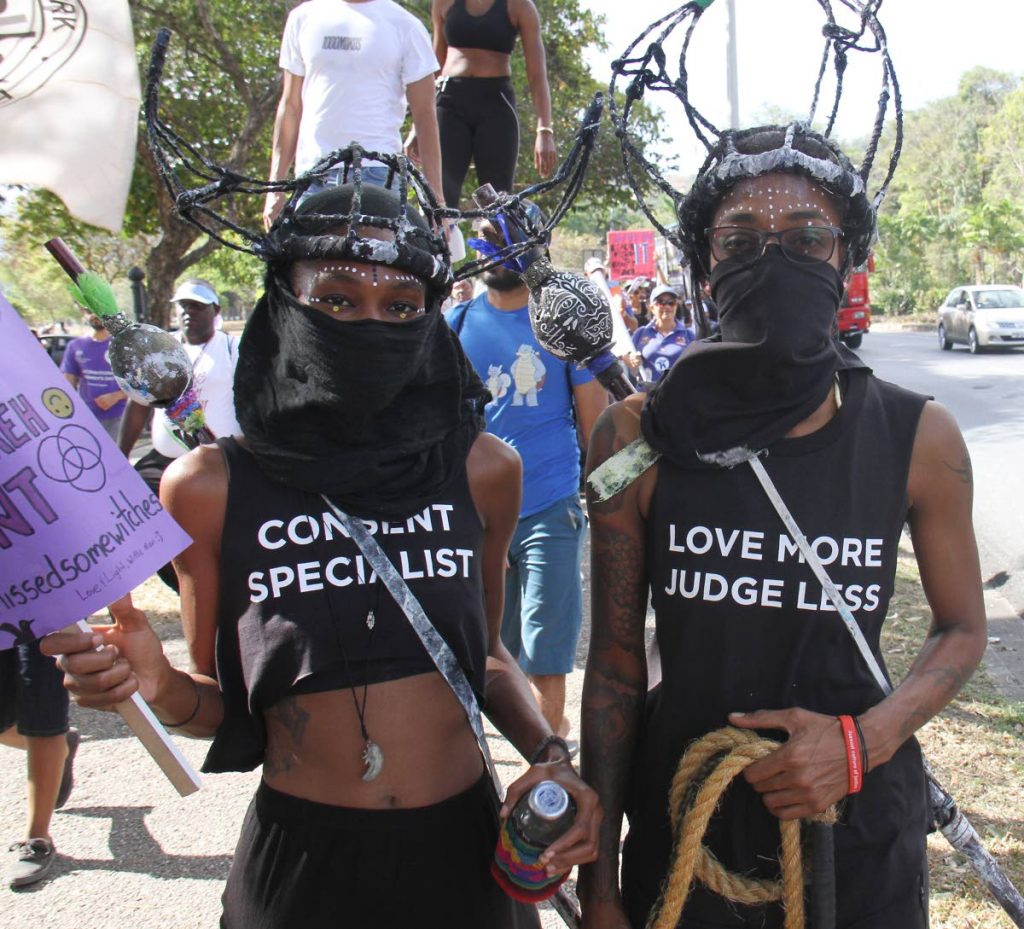Gender justice on the move

YOUNG PEOPLE were the most joyous part of Saturday’s International Women’s Day march. Many were university students bringing their friends, their homemade posters, their radiant energy, and their sense of participating in their moment in history.
The goal was always to provide a space in our nation for younger generations to experience the safety and inclusiveness, yet fearless politics, of a global feminist movement long challenging violence, gendered divisions of labour, homophobia, and domination of women and nature. It was to carry a legacy, begun in San Fernando in 1958, just long enough and lovingly enough to hand it on.
It was to provide an example of wide public representation, creative expression, diverse concerns, and intimacy with the dreams and labour of home-grown Caribbean feminisms. It was to bring young women and men together at a time when we already know men can be feminist. Finally, it was to remind about the humbling lessons of cross-class solidarity, for we march without registration, without ropes, and always mindful of women workers’ realities. Just bring your message and come.
Riffling through our visual archives, young people’s posters show them far ahead of the ruling generation of obsolete men and complicit women, together holding back on their promise of equal and inclusive citizenship, and holding onto an old order that upcoming ages have already transcended.
In the decades of the IWD march, the issues have expanded from a focus on girls and women’s rights to include those of transgender people – those who dis-identify with the dominant expectations of masculinity and femininity or the identities of male and female or the category of heterosexual.
Sounds like they just want to be human, observed my eight-year-old, something a parliament of representatives isn’t brave enough to see. Meanwhile, we too must keep learning to challenge our privileges in our leadership, improving our accountability to people with disabilities, First Nations’ Peoples and refugees.
Caribbean feminism was always the region’s most radical struggle to recognise us as human beings, however we choose to live and love as families, neighbours and citizens consenting and contributing to a greater good. And, some moments, it seems like that message rings clear.
Though today only a few hundred, in a decade there may be thousands marching. Just enough to open the corridors of power in our homes, schools, corporate boardrooms and Cabinet.
Nurtured amongst those who have come of age in TT’s most progressive big tent where Soroptomists march with ASJA Ladies who march with the National Union of Government and Federated Workers’ Women’s Executive Council who march with Womantra who march with CAISO who march with the Breastfeeding Association of TT who march with the UWI Guild of Students who march with the Silver Lining Foundation who march with the Single Mothers’ Association of TT who march with TTUTA, all carrying flags that call for gender justice.
The full list of organisations is much longer, showing a feminist movement that endures despite the precariousness of NGO survival. The Network of NGOs of TT for the Advancement of Women, Women Working for Social Progress, the Women’s Institute for Alternative Development, the Coalition Against Domestic Violence, Conflict Women, Mamatoto, the CEDAW Committee of TT, the Caribbean Association for Feminist Research and Action, the Family Planning Association of TT, the Association of Female Executives of TT, and more were all there.
These long-established women’s organisations held on through the decades to see another generation, that doesn’t even know their history or their name, spring fresh, certain and strong.
Women’s intergenerational mentoring of civic challenge to all the harms of patriarchal power, and radical impatience for a world already possible can be seen in those youthful posters.
There are many reasons to march. To protest or to add public power to public outcry. To build a movement. To inspire those who didn’t know they were imaginable and their dreams realisable.
To make our numbers a source of strength for when we return to everyday struggle.
To simply take up public space. To find that woven into the labour, despair, risk, exhaustion and hard lessons are also community, hope, successes and joy. When students come, on their own, it is a sign of the zeitgeist, the spirit of the times. They marched for better for themselves and each other, for better without violence or silence, fear or favour. The struggle continues. Next year, we will be here so they grow stronger.


Comments
"Gender justice on the move"